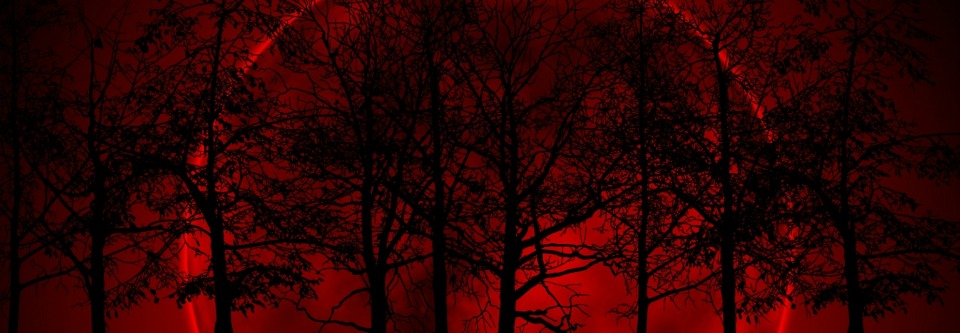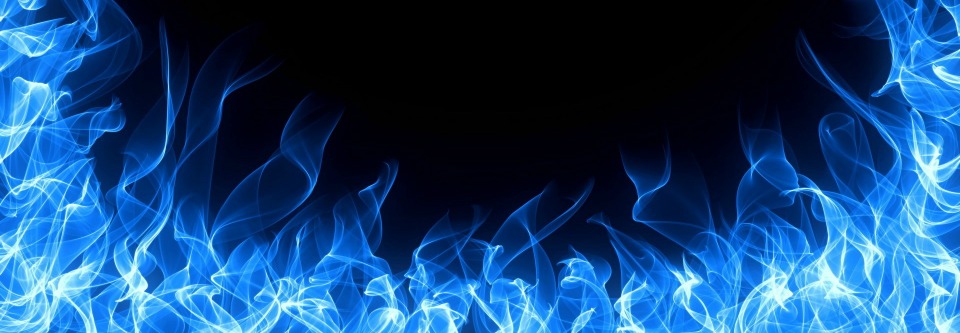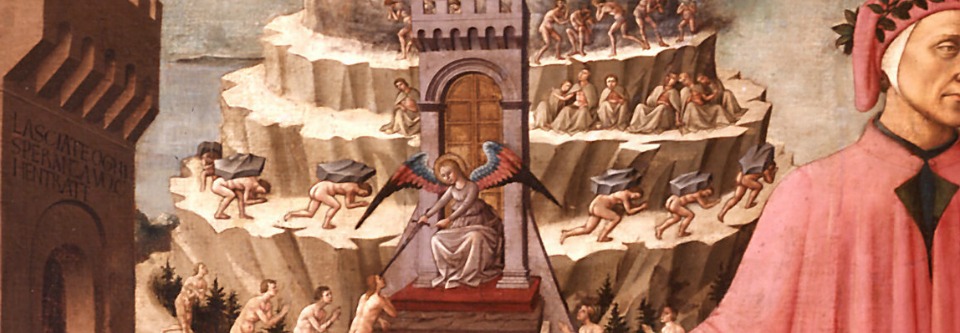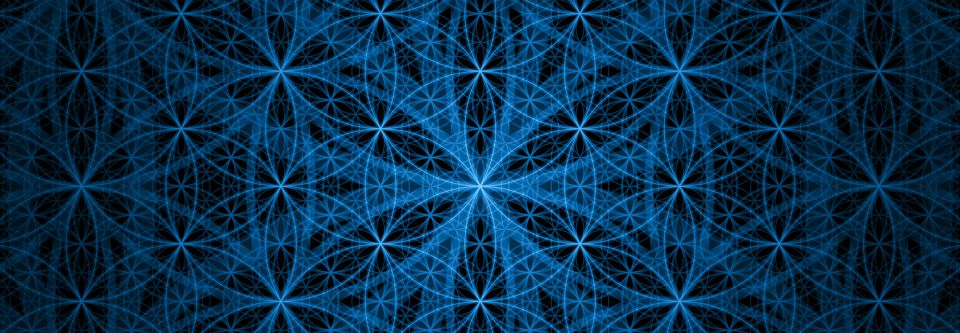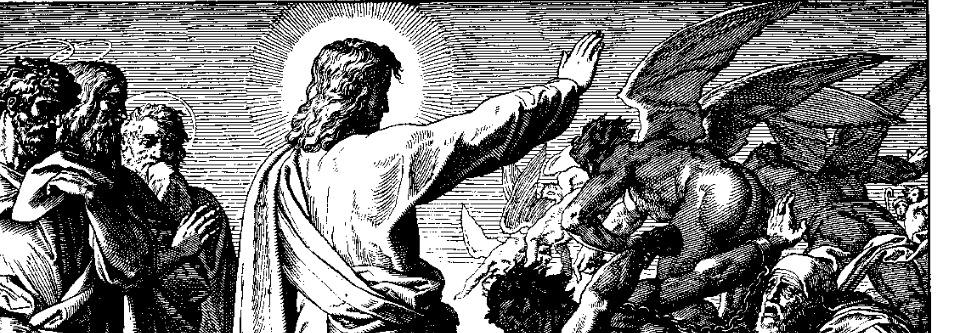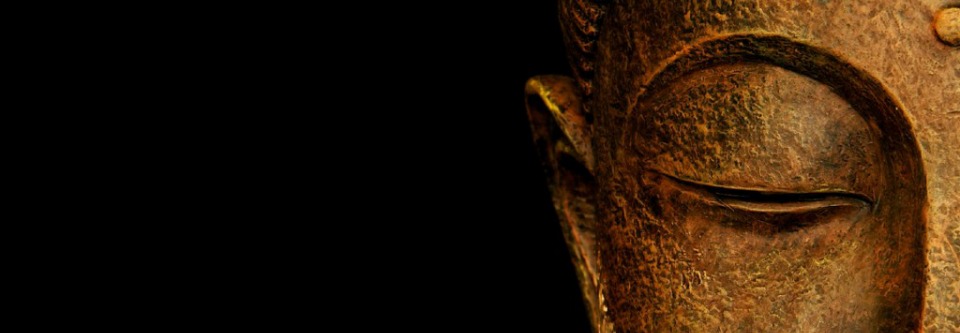“For our struggle is not against enemies of blood and flesh, but against the rulers, against the authorities, against the cosmic powers of this present darkness, against the spiritual forces of evil in the heavenly places.”
–The Letter to the Ephesians Chapter 6, verse 12
A month ago in response to the protests in Baltimore, I wrote a piece called Political Shamanism and the Subtle Energetics of Racism.
In that piece I argued that racism is not only a phenomenon of the manifest concrete world (though it is most definitely that as well), but is also a reality of the subtle world: i.e. the world of our energy, our dreams, even our souls. Racism is, in part, a soul illness. It is a debilitating virus of the soul that eats away its host from the inside. It also harms the souls (and often the bodies) of those whom it chooses to hate. I cited the ancient wisdom teaching that souls are not only individual but also collective–there are souls (animas) of places, of institutions, of peoples. They too, just like individual souls, can become sick.
In that piece I was focused on the collective soul of white America and its soul illness of racism. This week there was the racially motivated terrorist attack against the Mother Emanuel church in Charleston, South Carolina. Following this story, and much of the analysis and coverage of it, further convinces me of the importance of that initial argument.
I want to take it a step further here. It’s going to take it to a more troubling place. But I believe through that land lies a path to a more promise-filled way of life. (For the record I almost wrote “dark” place there instead of troubling until I caught myself as to how atrocious it would be to use that word in this context, so the infiltration runs deeply).
I don’t want this view to be seen as supplanting all of the other important perspectives on this topic. Just that I think the perspective I’m offering here is one I typically see missing.
So before we get there we need one more important piece of theological wisdom: souls worship god(s).
The soul is the energetic matrix, the deepest essence of a being. When souls become drawn to their source, they enter into devotion. Souls devote themselves, which means they worship God or rather gods. This point is an important one with significant ramifications, though we don’t typically talk in this manner so the implications aren’t very obvious to us in our secular world (yet the effects are very much real nonetheless).
It’s of course impossible to talk about gods in the United States with talking about The Bible. It is often incorrectly stated that the Bible teaches monotheism–i.e. the belief that there is but one God. The Bible however is very polytheistic insofar as it teaches there are many, many, many, many, many gods. Even the name of God in the Bible is a plural world (Elohim). The Bible’s argument instead is that one god of all those gods is worth worshipping, namely the God of Israel.*
The Bible then would more accurately be termed a text of monolatry rather than monotheism. The Greek word latreia means worship, adoration, and obedience–that’s where the “latry” comes from. So monolatry means worship (latreia) of one god as opposed to worship of one or many of the other gods around, whereas idolatry is worship of an idol, i.e. a false god.
The crucial piece to remember is that The Bible does not say false gods are unreal (in some ontological sense). The critique is far more subtle than that. It’s that the wrong god (who is nevertheless real) is being worshipped. gods that don’t actually exist don’t cause problems. gods that do exist but are harmful, when worshipped, now these gods are indeed profoundly destructive.
Here’s my supposition then:
The soul of white America worships one (or more) of such very real but very harmful false gods.
“For our struggle is not against enemies of blood and flesh, but against the rulers, against the authorities, against the cosmic powers of this present darkness, against the spiritual forces of evil in the heavenly places.”
In the Hebraic-Jewish understanding worship of a god meant total service to that god. There was a specifically cultic dimension of worship to be sure, what we would think of today as religion proper–different gods had different temples, different locales, different customs, and different priesthoods. But worship in the Jewish understanding is an integral process. Religion in this view is an entire way of life, not something one does for an hour on the weekend. Obedience or worship would specifically cover one’s cultic duties but also one’s ethics, relationships, sense of personhood and group identification (“we are the people who worship this god”), and so on. These would all be, in totality, one’s religion.
Given that totality, here’s the catch:
Different gods bring with them different energies and different worldviews.
The argument of the Bible, particularly the Book of Exodus, is that if you worship the wrong god you will have the wrong social order. And conversely if there is an unjust and unmerciful social order it must be because there is bad theology.
The equation would go:
wrong god = unjust social order
Pharaoh worshipped the wrong god and therefore enslaved the Hebrews. The right god (or at least a better god) freed the slaves.
Again it’s not that the gods worshipped are unreal. It’s not Scooby Doo. We meddling kids don’t pull off the masks of these supposed gods and jenkies we really find out all along it’s been the old caretaker of the children’s park.
These gods, these subtle energies-archetypes, these deities are real. And some of them are opposed to life. Some of them are evil. (Many are benevolent, but that’s not our focus for the moment.)
Secularism, as a philosophy that dominates our world, denies the truth of the subtle realm. It doesn’t stop the subtle realm however from being real or having effects. Secularism simply makes the subtle unconscious (which is very dangerous). The truth is obedience and worship is occurring whether or not one identifies as secular, religious, atheistic, agnostic, whatever. The labels actually are quite secondary. The primary thing is who or what is being worshipped and being given one’s obedience.
“For our struggle is not against enemies of blood and flesh, but against the rulers, against the authorities, against the cosmic powers of this present darkness, against the spiritual forces of evil in the heavenly places.”
I’ve always found that last sentence so strange–spiritual forces of evil in the heavenly places. Shouldn’t heaven be free of evil? Well no. Not if we understand heavenly places to mean the subtle realms (as I do). Then there are forces of evil in the subtle (i.e. heavenly) realms, one of those forces being racism.
Now we are in a position to tie these various strands together. I argued (in my earlier piece) that white America has a kind of soul, a soul that is infected with the subtle illness of racism. In this piece I’ve argued further that souls worship gods and that worship means total obedience unto the god and that god’s energy.
Moreover, some gods are anti-life. Some gods are spiritual forces of evil in the heavenly places. To worship those gods is to serve those powers. Worship here meaning full spectrum worship. To give our money, our energy, our time, our allegiance, our bodies, our hearts, even our very souls to a false, anti-life god.
Further, the social order reflects the god (or gods) worshipped. The social order, according to the Bible, is the reflection of the gods worshipped. The social order then is the test of the dominant worship. In other words:
The institutions and structures of a society reflect the god or gods being worshipped.
Therefore, if as I’m suggesting, the soul of white America is worshipping a false god (or gods) then its institutions are corrupted at their very energetic level. The rise of prisons in the US would be the most obviously example–soul crushing places which are temples or churches built to a god who lives off the torture of others. But it goes well beyond prisons alone. They are only the most obvious example of what liberation theologians called social sin.
All of which means the soul of white America (broadly speaking) not only suffers the illness of racism, it’s also worshipping a false god. It’s worshipping an anti-life subtle energy/archetype or deity (or possibly deities). It worships an idol. The soul of white America (or more precisely, significant portions of it) has given its worship, its obedience, its devotion to a god of death and domination. The soul of white America has wedded itself in a perverted form of love to a loveless spiritual force of evil in the subtle heavenly places.
The Bible is very clear about what to do with demons, false gods, and idols: exorcise them.
Hence it’s time for a social exorcism.
The social conservative narrative forming that attempts to co-opt this massacre as an attack on religious liberty points precisely in this direction though not in the way those advocating that position imagine. Their attempt to hijack the narrative of the event is an evasive maneuver, attempting to hide the ugly truth lying at the heart of this all. There is a spiritual esoteric aspect to this story, but it’s not about white evangelical American Christians not being able to pray in public schools and therefore being similarly oppressed such that they are able to identify with those of murdered African Americans in the black church tradition.
There are different gods at war and different social orders representing those opposing gods. This obvious distinction gets confused in media because both groups theoretically worship the same Christian god, but in practice they do not.
The social order of white America is one with a terrible history: genocide of indigenous peoples, slavery and segregation, class-based violence, sexual degradation, global rapaciousness, and destruction of the biosphere.
Of course there were and are plenty of well-natured and well-meaning white Americans, as well as white Americans who actively opposed such realities. That’s not the point. We’re talking the collective soul. We’re talking its devotion, its obedience to a spiritual force of evil in the heavenly places.
Because, as the Biblical argument goes, we need to look at the social order. The social order is the expression of the god worshipped. The social order (and not anything else) is what tells us who really is the god or gods of our time. What the Letter to the Ephesians calls “the cosmic powers of the present darkness.”
Those words still apply today. After the massacre at Sandyhook Elementary, Catholic writer Gary Wills wrote an article calling gun culture in American “Our Moloch”.
Moloch was a god to whom devotees offered human child sacrifices, their own children in fact. Wills’ point, one of complete truth, is that America worships the gun god Moloch and therefore must sacrifice its children to him, since he is after all, a subtle energy-demonic god-evil spiritual force who requires the blood of children to survive. That was or more accurately is (since Moloch is clearly real) the cultic obligation due Moloch.
As long as Moloch is worshipped he will have his blood. He will demand payment in the form of innocent lives and he will get it. Until white America stops worshipping Moloch, legitimate gun regulations (much less the disarmament of the country) will never happen.
The Bible understands something very crucial when it comes to gods–namely they need us as much as we need them. The relationship is a two way street. We become devoted to a god but that god also becomes devoted to us. Our worship of the gods changes us, but our worship of the gods changes the gods themselves.**
Said more simply:
You become what you meditate on.
And if we meditate on death, that is what we become. Robert Oppenheimer knew this terrible truth; which is why when he saw the atomic bomb explode, a bomb he helped to create, he quoted the Bhagavad Gita:
“I have become death, destroyer of worlds.”
You become what you meditate on. We all do.
Which is why the only question really worth asking someone is: who do you worship? For that is what you will become.
The soul of white America worships Moloch; hence it has become his servant, his devotee, even his incarnation. Moloch is a parasitic god requiring the blood of children to survive. Moloch is an anti-life force, a kind of zombie, a dead reality still somehow in a quasi-state of non-dead yet non-living life requiring the consumption of truly living beings in order to continue to exist in this non-dead yet non-living state.
However, it gets worse, I believe Moloch is only one of the false idols worshipped by the soul of white America.
Another such god (or perhaps another facet of Moloch?) is the god of the white American South, the god of the Confederacy, that is the god of white domination. This is the god Dylann Ruff worshipped. In fact, he wore badges to show his loyalty (his latreia) to white colonialist Rhodesia.
The reason why no major US conservative political figure wants to acknowledge the racism underlying the terrorist attack in Charleston is because to do so would leave the entire edifice of their theological and social reality crumbling. To acknowledge the obvious reality that the attack was motivated by race would be to implicate their souls. It goes way deeper than revealing the flaws in their political ideology. It would be to confess a very stain at the core of their psyches.
After the end of the US Civil War, the Union Army occupied the lands of the former rebel confederate territory. There began perhaps the most radical social and political experiment in US history: Reconstruction. It was an attempt to dismantle the entire edifice of white supremacy upon which the South was built. It was an attempt to not simply end slavery but deconstruct the entire ideology on which it was built.
For many complex reasons that plan was abandoned and a bargain was struck with the devil–and given we’re talking subtle energetics, I mean quite possibly and quite literally the devil. That deal was to leave the South free of the occupation. From there the KKK filled the security void and reinstalled white power. The tragic irony being that the (Northern) US Army had to occupy the South once more a hundred years later in order to end segregation.
From the late 19th century on, an entire industry arose to attempt to “heal the wound of America” but that healing was only to take place between the white southerner and his white northerner “brother.” Formers slaves and their descendants were definitely not welcomed into that healing circle. Movies, novels, historical narratives, Civil War re-enactments all treat the antebellum South and the Confederacy as a beautiful but tragically doomed land. The ubiquitous Confederate flag throughout the South (and rural parts of the North, Midwest and Western US) is the most visible sign.
The nostalgia of Dixie and the land of cotton stirs much of the white soul (even those not from the South). The most virulent edges of it were dulled in the 1960s but many parts of it were left to remain. It was those that allowed Nixon, Reagan, and the entire conservative counterrevolution of the last 40+ years to flourish.
When Reconstruction was ended, The Confederacy, large parts of it anyway, was fused back into the soul of white America. It was a soul retrieval of the worst possible kind rather than the exorcism that was (and still is) so sorely needed. The Confederacy is a poltergeist, an entity attachment on the soul of white America one that needs to be exorcised.
How many US military bases are named after Confederate Generals? Generals who took up arms against the government, the same government who now has bases named for those rebellious leaders? A deal with the devil to bring back the South. And it worked in its perverse way: e.g. the dominance of the South in the current US military is well documented. Remember how I said the institutions themselves become means of the dissemination of the false god’s energy into the manifest world? It’s right there in the names.
Which is to say all of it is built upon worship of a false god. Whether it was the white American soul that first revived some dead or dying god and corrupted it to serve its purposes or whether that god was corrupt to begin with is hard to say. At this point, the relationship is a co-dependent one.
That evil force in the heavenly spheres, that white god of domination, had a devotee in Dylann Ruff. He shouted core theological beliefs of that god just prior to his act of terror: “you’re stealing our [white] women and taking over OUR country.”
And it is that god and all his minions that must be exorcised; all his demons, demigods, all his lieutenants, powers and principalities. The white soul of America has to confess its worship of this false god, repent, and detach itself. It needs to cut the cord to that parasitic god until that god disintegrates. The parasite cannot live without its host. If we stop feeding it, if we stop meditating on these gods of death, they will die out. But that will not be pretty. False gods are addicts; their parasitic tentacles reach deeply into the core of the white American soul. They will not go gently into that good night.
Since the soul we are speaking of here is collective and has impact on individual souls, it will require individuals of a high caliber to do the subtle energy exorcism work collectively. Prior to an exorcism, shamans, exorcists, and priests have to prepare themselves for what is to come. In all honesty, I think just about the only real remaining value to individual spiritual practice nowadays is to act as a kind of preparation for the collective exorcism rites we will need to perform together.
While my background is Christian and therefore I speak from the Biblical view of liberation and the Biblical cosmology, the closest parallel to what I’m arguing here that I’m aware of from the Buddhist tradition comes from my friend Darrin Drda whose re-imagined Buddhist cosmology and teaching in relation to the US as an imperial reality.
The key point, regardless of which language or system we want to reference, is that the evil subtle energetics be taken as real. Not so real as to be overwhelming or to create paranoia. Here The Biblical account offers hope that these false gods are not and need not be victorious. They can be exorcised. They can be energetically metabolized.
C.S. Lewis wisely said there were two mistakes when it came to evil: to underestimate it and to overestimate it.
To invoke the process of social exorcism is to take this issue very seriously and yet to create a stronger feeling of empowerment. Neither under nor overestimating its power.
Liberal religious types and secular individuals have ceded this territory because of the discomfort of talking about things like exorcisms. People might think you crazy for even contemplating such a thing. It leaves the truth of social exorcism to be perverted and corrupted to the ends of those who claim to use it to rid the world of their hated “other”, e.g. gays and lesbians. It’s also left the field wide open for the devotion to the false god(s), whether that devotion is conscious or not (the vast majority of which is definitely not).
I believe it’s time to change that.
“For our struggle is not against enemies of blood and flesh, but against the rulers, against the authorities, against the cosmic powers of this present darkness, against the spiritual forces of evil in the heavenly places.”
—
* Christians, as distinct from Jews, argue that the God of Israel was incarnate in the human being Jesus of Nazareth. While Muslims believe that same god, the god Al-Lah, perfected those earlier revelations with the final revelation to the Prophet Muhammad. Specific and important differences aside, all in all same god.
** Though this is not my focus here, for the theology-spirituality nerds out there, I’m making an argument for a post-metaphysical argument form of social exorcism.

